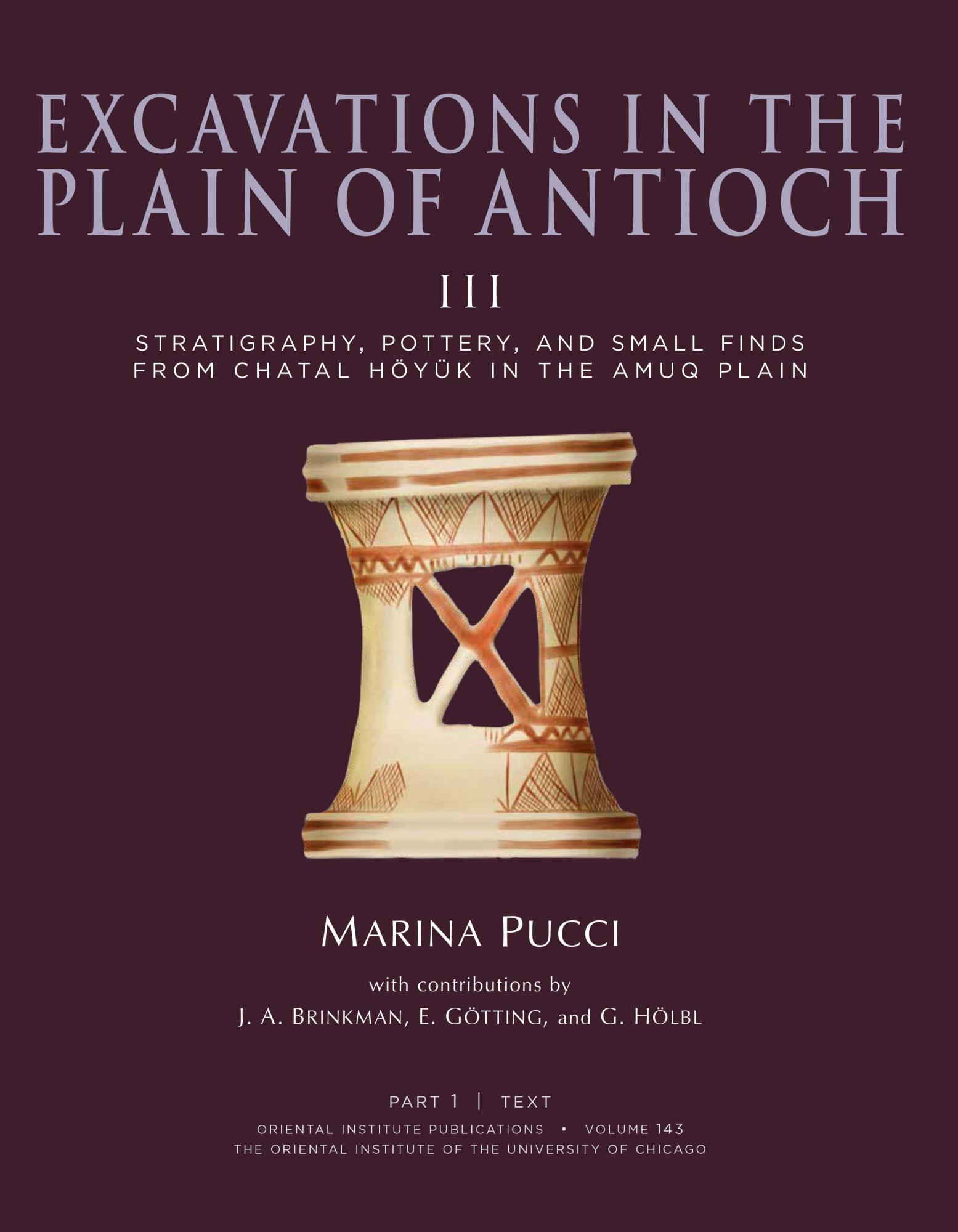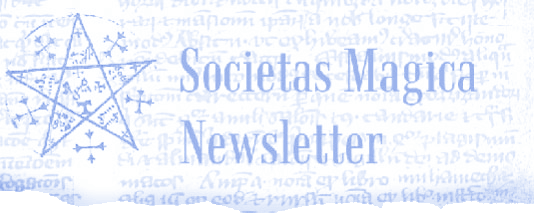![]() | Spring_2017_Issue_35
File Size : (396.6 Kbytes) | ![View Thumbnail]() | Magic Manuscripts from Somers and Jekyll in the Collections
of the British Library
László Sándor Chardonnens |
![]() | Fall_2016_Issue_34
File Size : (1026.5 Kbytes) | ![View Thumbnail]() | Notes on the Picatrix: Non- Heteronormative Sex, and Forthcoming Translation
Daniel Attrell and David Porreca |
![]() | Spring_2016_Issue_33
File Size : (360.1 Kbytes) | ![View Thumbnail]() | Israel’s Name at the Site of the Circumcision: Eros and Magic in the Shiur Qomah
Marla Segol |
![]() | Spring_2015_Issue_32
File Size : (862.5 Kbytes) | ![View Thumbnail]() | Women, Ritual, Power, and Mysticism in the Testament of Job
Rebecca Lesses |
![]() | Fall_2014_Issue_31
File Size : (1114.6 Kbytes) | ![View Thumbnail]() | Ciphers and Secrecy Among the Alchemists: A Preliminary Report
Agnieszka Rec |
![]() | Spring_2014_Issue_30
File Size : (863.5 Kbytes) | ![View Thumbnail]() | Warding Off Doom in Mesopotamia and the Bible
Marian Broida |
![]() | Fall_2013_Issue_29
File Size : (876.8 Kbytes) | ![View Thumbnail]() | Objects as Demonic Subjects in Spiritual Warfare Handbooks
Sean McCloud |
![]() | Spring_2013_Issue_28
File Size : (884.2 Kbytes) | ![View Thumbnail]() | A Report on Current Magical and Esoteric Blogs
Laura Mitchell |
![]() | Spring_2012_Issue_27
File Size : (1223.0 Kbytes) | ![View Thumbnail]() | Bewitched in their privities: Medical Responses to Infertility Witchcraft in Early Modern England
Jennifer Evans |
![]() | Fall_2011_Issue_26
File Size : (599.0 Kbytes) | ![View Thumbnail]() | Purification in the Papyrae Graecae Magicae
Jonathan Shen |
![]() | Spring_2011_Issue_25
File Size : (1029.0 Kbytes) | ![View Thumbnail]() | Magic as the Basis for Social Cohesion in pre-Islamic Mesopotamia
Siam Bhayro |
![]() | Fall_2010_Issue_24
File Size : (555.0 Kbytes) | ![View Thumbnail]() | Some Observations on Jewish Love Magic: The Importance of Cultural Specificity
Ortal-Paz Saar |
![]() | Spring_2010_Issue_23
File Size : (1062.0 Kbytes) | ![View Thumbnail]() | Clerical Magic in Icelandic Folklore
Thomas B. de Mayo |
![]() | Fall_2009_Issue_22
File Size : (847.0 Kbytes) | ![View Thumbnail]() | Developing a Curriculum on the History of Esotericism and Magic in Colombia
Johann F.W. Hasler |
![]() | Spring_2009_Issue_21
File Size : (1119.0 Kbytes) | ![View Thumbnail]() | Magical Letters, Mystical Planets: Magic, Theosophy, and Astrology in the Sefer Yetsirah and two of its Tenth-century Commentaries
Marla Segol |
![]() | Fall_2008_Issue_20
File Size : (468.0 Kbytes) | ![View Thumbnail]() | Theses de magia
Marco Pasi |
![]() | Fall_2007_Issue_18
File Size : (1194.0 Kbytes) | ![View Thumbnail]() | Up on the Roof: Understanding an Anglo-Saxon Healing Practice
K. A. Laity |
![]() | Spring_2007_Issue_17
File Size : (1420.0 Kbytes) | ![View Thumbnail]() | The Key of Solomon: Toward a Typology of the Manuscripts
Robert Mathiesen |
![]() | Fall_2006_Issue_16
File Size : (1211.0 Kbytes) | ![View Thumbnail]() | Real, Apparent and Illusory Necromancy: Lamp Experiments and Historical Perceptions of Experimental Knowledge
Robert Goulding |
![]() | Spring_2006_Issue_15
File Size : (2676.0 Kbytes) | ![View Thumbnail]() | “Pictures passing before the mind’s eye”: the Tarot, the Order of the Golden Dawn, and William Butler Yeats’s Poetry
Anke Timmermann |
![]() | Fall_2005_Issue_14
File Size : (4245.0 Kbytes) | ![View Thumbnail]() | Approaches To Teaching the History, Practice, and Material Culture of Magic: A Roundtable on Pedagogy
Amelia Carr |
![]() | Fall_2004_Issue_13
File Size : (2114.0 Kbytes) | ![View Thumbnail]() | Magic and Impotence in the Middle Ages
Catherine Rider |
![]() | Spring_2004_Issue_12
File Size : (838.0 Kbytes) | ![View Thumbnail]() | What is and is not Magic: the case of Anglo-Saxon Prognostics
Roy M. Liuzza |
![]() | Fall_2003_Issue_11
File Size : (1886.0 Kbytes) | ![View Thumbnail]() | Islamic Magical Texts vs. Magical Artefacts
Emilie Savage-Smith |
![]() | Spring_2003_Issue_10
File Size : (799.0 Kbytes) | ![View Thumbnail]() | A Magic All Its Own
Michael D. Swartz |
![]() | Summer_2002_Issue_9
File Size : (1307.0 Kbytes) | ![View Thumbnail]() | John of Morigny's Liber Visionum and a Royal Prayer Book from Poland
Claire Fanger and Benedek Láng |
![]() | SMN_Winter_2001_Issue_8
File Size : (2125.0 Kbytes) | ![View Thumbnail]() | Images of Desire
Geoffrey McVey |
![]() | Spring_2001_Issue_7
File Size : (412.0 Kbytes) | ![View Thumbnail]() | Magic in the Cloister
Sophie Page |
![]() | Fall_2000_Issue_6
File Size : (1400.0 Kbytes) | ![View Thumbnail]() | Encounters with Amulets
Peter Murray Jones |
![]() | Fall_1998_Issue_5
File Size : (291.0 Kbytes) | ![View Thumbnail]() | Issue on Pedagogy
Carol Menning |
![]() | Fall_1997_Issue_4
File Size : (49.0 Kbytes) | ![View Thumbnail]() | The Warburg Institute: History and Current Activities
Will F. Ryan |
![]() | Fall_1996_Issue_3
File Size : (48.0 Kbytes) | ![View Thumbnail]() | Sessions and Papers on magic at Kalamazoo
Claire Fanger |
![]() | Spring_1996_Issue_2
File Size : (45.0 Kbytes) | ![View Thumbnail]() | A Report on Recent Work on Charms
Lea Olson |
![]() | Fall_1995_Issue_1
File Size : (43.0 Kbytes) | ![View Thumbnail]() | Introduction of Societas Magica Newsletter
Richard Kieckhefer |



















 in Deir el-Bahari
in Deir el-Bahari 








